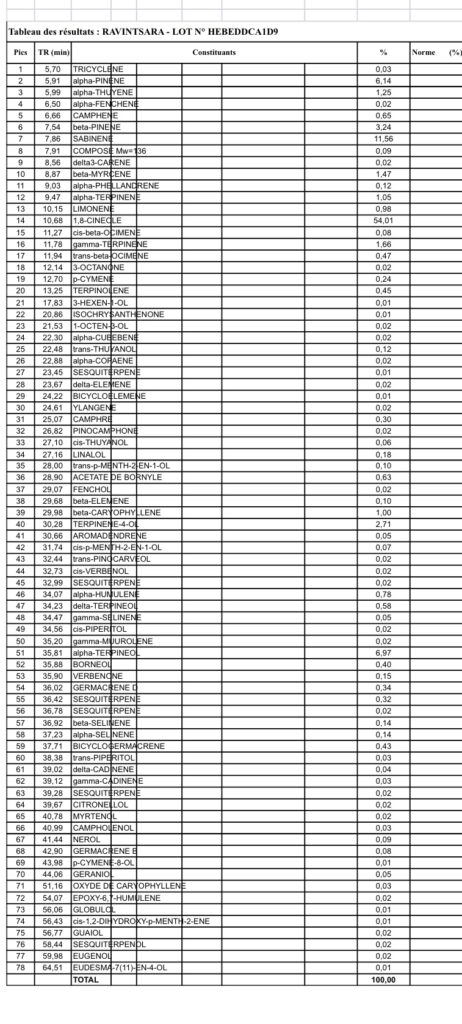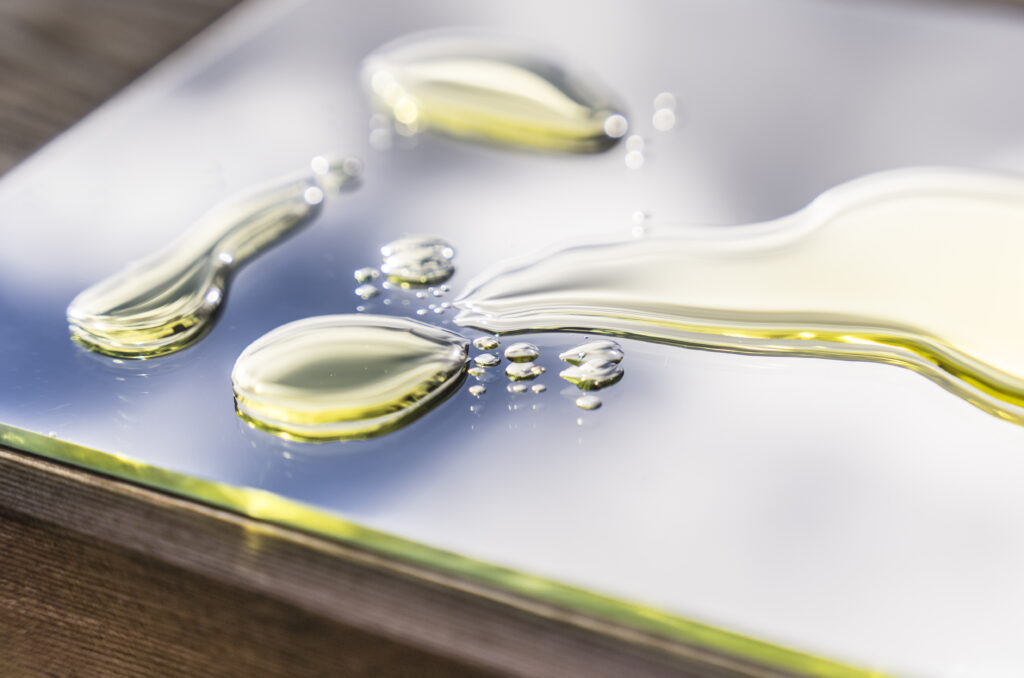We often talk about the properties of ravintsara, its virtues to combat the first evils of winter.
But what is hidden behind its virtues? and Why is the ravintsara effective?
These are the molecules that make up the ravintsara essential oil.
Laurence Lebrun in her book “Aromatherapy and its natural allies” tells us:
An essential oil has an average of 150 molecules or different active ingredients. We often compare the drop of essential oil to a cooperative: the members of this cooperative for example (1.8 cineole, alpha-terpineol, pinene, limonene) are well individualized, their intrinsic properties, and each one brings to the group named drops its virtues so that the strength of this group is greater than the sum of individual actions»
Let’s take the example of analysis (chromatography of our ravintsara essential oil (lot HEBEDDC), 78 molecules emerged for a 100% analysis rate);
And so, which molecules make up the ravintsara? and What are their fields of action?
General composition of organic ravintsara essential oil:
- oxides at 50/65%
- Example of our HEBEDDC batch: 54%,
these oxides, are in the case of ravintsara of 1,8-cineol. - Oxides “release the respiratory system, fight infections, stimulate the body, and activate micro-circulation.”
- Example of our HEBEDDC batch: 54%,
- Monoterpenes up to about 20%: sabinene to 15% alpha- and beta-pinenes.
- In the example sabinene (11.54%), alpha-pinene (6.14%), beta-pinene (3.24%) => total monoterpenes (20.92%)
- Monoterpenes are “powerful atmospheric disinfectants, they also help decongest the respiratory tract, they protect against viruses and bacteria”
- 10% monoterpenol: alpha-terpineol, linalol, thujanol.
“They replace and can replace phenol with anti-infective and antiviral properties, but their low toxicity makes them usable in children.”
The document, presenting chromatography is available here.

Find more information at the following link

